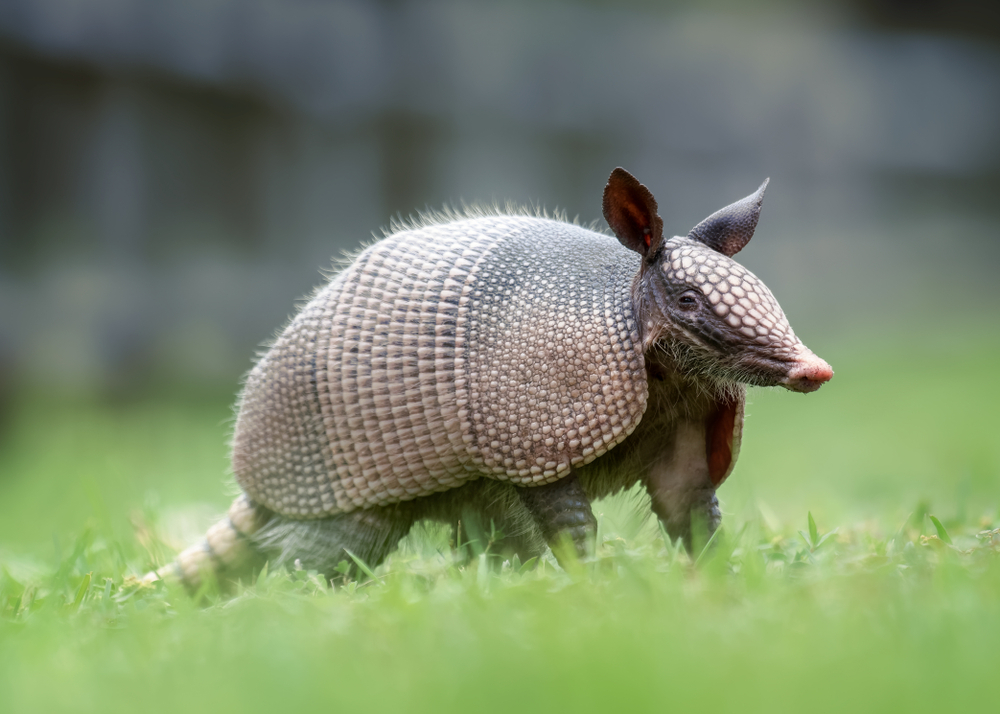Curious About Armadillos? Here Are 10 Fascinating Facts

Armadillos are one of nature’s most intriguing creatures, sparking curiosity with their unique appearance and behaviours. These fascinating mammals, known for their distinctive armor-like shell, have captured the imagination of people across the globe. Armadillos belong to the order Cingulata, which denotes their characteristic bony plates that provide protection against predators. But there’s much more to these creatures than meets the eye.
What makes armadillos truly captivating is their extraordinary adaptation skills and behaviours. From their expert digging abilities to their peculiar reproductive cycle, armadillos exhibit a range of traits that make them stand out in the animal kingdom. They are predominantly found in the Americas, thriving in a variety of environments from rainforests to grasslands. Armadillos also play significant roles in their ecosystems, aiding in soil aeration and pest control.
In this blog post, we will delve into ten fascinating facts about armadillos that will leave you in awe. Learn about their impenetrable armor, their diverse habitats, unique diets, and much more. By the end of this journey, you’ll have a newfound appreciation for these remarkable creatures and their vital role in nature. So, let’s embark on this exploration and uncover the wonders of the armadillo world.
Fact 1: Armadillo Armor
One of the most distinctive features of armadillos is their unique armor plating, which sets them apart from other mammals. This protective shell is composed of bony plates covered in a tough, leathery skin, forming a defence mechanism that is both flexible and resilient.
The armor covers the back, sides, head, and tail of the armadillo, leaving their underbelly exposed as the only vulnerable part. When threatened by predators, such as coyotes or jaguars, armadillos can curl into a ball, making it extremely difficult for their attackers to reach any unprotected parts.
Some species, like the three-banded armadillo, can completely encase themselves in their armor, effectively forming a nearly impregnable shield. This natural body armor is not just for protection; it also serves as a support structure for their powerful muscles, enabling them to dig and forage effectively.
Fact 2: Habitat Range
Armadillos are primarily found in the Americas, with a range that extends from the southern United States to northern Argentina.
They are remarkably adaptable creatures, capable of thriving in a diverse array of environments. From the dense, humid rainforests of Central and South America to the arid, open grasslands and scrublands, armadillos have successfully carved out a niche in a variety of habitats.
They are also commonly found in semi-deserts and alongside riverbanks, demonstrating their versatility. This wide distribution is testament to their ability to survive in different climates and terrains, making them one of the most widespread and resilient mammals in the New World.
Fact 3: Diet and Eating Habits
Armadillos have a varied diet that primarily consists of insects, small invertebrates, and some plant matter. They are expert foragers, using their keen sense of smell to sniff out food hidden beneath the ground. With their strong, clawed forelimbs, they dig up insects such as ants, termites, and beetles, which make up a significant portion of their diet.
Unique among their eating behaviours is their method of consuming ants and termites; they use their long, sticky tongues to efficiently lap up these small creatures from their colonies. In addition to insects, armadillos also consume small vertebrates, fruits, and various plants, making them opportunistic feeders.
Their adaptable diet helps them thrive in diverse environments, as they can easily find and exploit available food sources. This versatility in their eating habits plays a crucial role in their survival and ability to colonize a wide range of habitats.
Fact 4: Burrowing Skills
Armadillos are expert diggers, a trait that is essential to their survival. Equipped with strong, clawed forelimbs, these fascinating creatures can rapidly excavate soil to create burrows that serve as their homes and refuges from predators.
Their burrowing skills not only provide them protection but also play an integral role in regulating their body temperature and creating a moist environment that suits their needs. Burrows offer armadillos a place to escape the heat during the day, and they can also hide from predators by retreating quickly into these underground havens.
Additionally, by creating intricate networks of burrows, armadillos help aerate the soil, which can benefit the ecosystem by improving soil quality and promoting plant growth. This remarkable digging ability highlights how armadillos have perfectly adapted to their environments, leveraging their burrowing talents to enhance their chances of survival.
Fact 5: Reproductive Cycle
Armadillos have a fascinating reproductive cycle, characterized by unique adaptations that enhance their survival chances. One of the most intriguing aspects of their reproduction is delayed implantation.
After mating, the fertilized egg remains in a state of dormancy for several months before implanting in the uterine wall. This delay allows armadillos to time the birth of their offspring with favorable environmental conditions, ensuring better survival rates.
Typically, armadillos give birth to identical quadruplets, meaning each litter consists of four genetically identical young. This unusual reproductive trait is particularly beneficial, as it maximizes the number of surviving offspring during the optimal season for food and shelter availability.
The combination of delayed implantation and the birth of identical quadruplets provides a remarkable insight into the evolutionary adaptations armadillos have developed to thrive in their diverse habitats.
Fact 6: Sleep Patterns
Armadillos exhibit unique sleep patterns that are quite distinct from those of many other mammals. These nocturnal creatures typically sleep for an astonishing 16 to 18 hours per day. Their long periods of rest are usually spent nestled within their burrows, which provide a safe, dark, and cool environment conducive to uninterrupted sleep.
This extensive resting time is in stark contrast to many other mammals, particularly humans, who average 7 to 9 hours of sleep per night. The armadillo’s extended sleep duration is believed to be an adaptation to their foraging lifestyle and metabolic needs, conserving energy for their nocturnal activities.
Additionally, their burrowing behaviour and secluded habitats reduce exposure to potential predators, allowing for longer, uninterrupted sleep cycles. Comparing these sleep habits to other mammals highlights the diverse strategies various species use to balance energy expenditure, predator avoidance, and environmental adaptation.
Fact 7: Unique Species
The family of armadillos encompasses a fascinating array of species, each with its own unique adaptations and distinguishing features. The nine-banded armadillo, common in the southern United States, is well-known for its prolific burrowing abilities and its habit of crossing roads, sometimes leading to unfortunate encounters with vehicles.
The pink fairy armadillo, native to central Argentina, is striking for its diminutive size and distinctive pinkish shell, which it uses to regulate body temperature and evade predators by burrowing swiftly into the ground.
Meanwhile, the giant armadillo, the largest of all species, boasts formidable digging capabilities that allow it to create impressive burrows with ease; its diet primarily consists of ants and termites.
The three-banded armadillo, found in South America, has the unique ability to completely roll into a ball, using its armor to protect itself from predators. Each species of armadillo showcases a remarkable range of behaviors and characteristics that highlight the incredible adaptability and evolutionary success of these intriguing mammals.
Fact 8: Armadillos in Culture
Armadillos occupy a memorable place in mythology and local folklore, particularly within the regions of the Americas where they are native. In certain indigenous cultures, armadillos are revered as symbols of protection and resilience due to their armored exteriors, often featuring prominently in tales that underscore their tenacity and resourcefulness.
The indigenous Chaco people of South America, for example, tell stories of the armadillo as a wise and cautious creature that teaches lessons about the importance of being prepared for life’s challenges.
Similarly, in Mexican folklore, the armadillo is often seen as a mystical animal that brings balance and harmony, intertwined with beliefs in its protective powers.
Moreover, their distinctive appearance and behaviours have made them iconic to the extent that armadillos feature in various cultural expressions, from music to literature.
Their significance in various cultures goes beyond mere symbolism, as armadillos have also found their way into art and traditional ceremonies, reflecting the deep connections these communities have with their natural surroundings.
The armadillo’s continued presence in cultural narratives underscores its enduring impact and the rich layer of meaning it contributes to the human experience.
Fact 9: Defense Mechanisms
One of the primary defense mechanisms armadillos employ against threats is their ability to quickly flee into the safety of their burrows. With their powerful claws and robust digging skills, they can vanish underground in a matter of seconds, effectively evading many predators.
Additionally, armadillos are known for their unique freezing behavior. When startled, they exhibit a sudden, motionless state, which can confuse and deter predators. This reaction buys them precious moments to assess the situation before deciding to bolt to safety or curl up defensively.
In the case of three-banded armadillos, these creatures can roll completely into a ball, shielding their vulnerable undersides with their tough, protective armor plates.
This behavior renders them nearly invulnerable to many natural threats. The combination of swift reflexes, freezing behavior, and the ability to physically shield themselves demonstrates the sophisticated and varied strategies armadillos use to survive in the wild.
Fact 10: Environmental Impact
Armadillos play a significant role in maintaining the balance of ecosystems, impacting both soil health and insect populations. Their burrowing behavior, which might seem disruptive at first glance, actually contributes greatly to soil aeration.
By digging for food and creating their burrows, armadillos help to mix the soil, facilitating the infiltration of water and nutrients and promoting healthier plant growth. Moreover, armadillos are voracious insect eaters, consuming large amounts of ants, termites, and other small invertebrates.
This natural pest control helps to keep insect populations in check, preventing potential overpopulation that could damage vegetation. Overall, armadillos’ ecological contributions highlight their integral role in fostering and sustaining the health and diversity of their habitats.
Conclusion
From their impressive armor and unique burrowing skills to their intriguing sleep habits and cultural significance, armadillos are truly remarkable creatures. We’ve explored ten fascinating facts about these nocturnal mammals, showcasing their adaptability and the crucial roles they play in their ecosystems. Armadillos’ ability to aerate the soil and control insect populations emphasizes their importance beyond mere curiosity.
It’s essential to appreciate and protect these fascinating creatures, given their contributions to biodiversity and the numerous ecological benefits they provide. Their resilience and distinctive traits remind us of the incredible diversity of life on Earth and the importance of safeguarding it.
We invite you to share your own experiences or additional facts about armadillos. Have you ever encountered an armadillo in the wild or heard any interesting folklore about these captivating animals? Your stories and insights help foster a greater understanding and appreciation for these unique mammals.
Let’s continue to celebrate and protect the armadillo, ensuring they remain a part of our world’s natural heritage for future generations.
Call to Action
Curious about armadillos? Dive deeper into the enigmatic lives of these fascinating creatures! If you enjoyed exploring these ten incredible facts about armadillos, be sure to follow our blog for more intriguing wildlife articles. We regularly delve into the captivating worlds of various animals, sharing insights and stories that highlight the wonder of the natural world.
Don’t keep all this fascinating information to yourself—share this blog post with your friends and family! Spread the knowledge and appreciation for these unique mammals, and help others learn about the essential roles armadillos play in their ecosystems. Your support in sharing and discussing our content helps build a community passionate about wildlife conservation and education.
Follow us for more captivating articles, and let’s continue the journey of discovery together!




